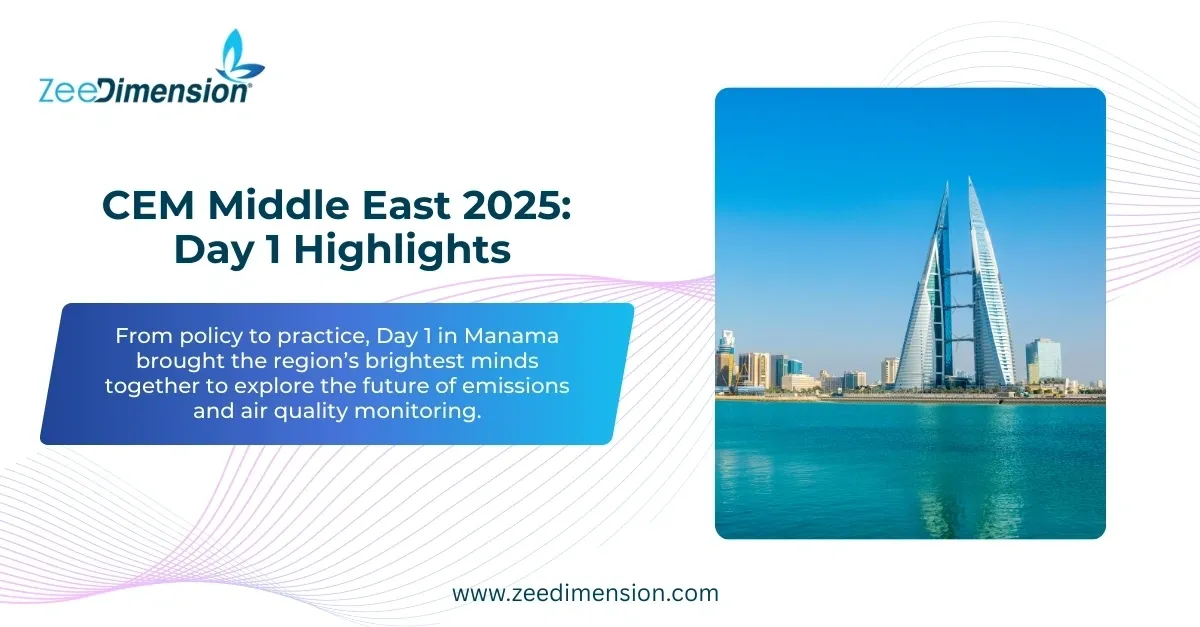
From policy to practice, Day 1 in Manama brought the region’s brightest minds together to explore the future of emissions and air quality monitoring.
Opening with Vision
Eng. Luma Abbas AlMahroos, Director at Bahrain’s Supreme Council for Environment, opened with a strong message: “Regional collaboration and technology integration are key to environmental resilience.” She highlighted Bahrain’s goals and the vital role of emissions monitoring in reaching them.
Regulatory Alignment & Real-Time Reporting
Mr. Jürgen Reinmann (ENVEA Global) highlighted the potential to unify local and EU industrial regulations, while Mr. Sanjeev K Kanchan (IFEST) stressed that real-time monitoring and transparent reporting are key to building accountability and public trust.
PFAS & Regional Emission Requirements
Mrs. Sam Hantoosh highlighted growing concerns around PFAS—so-called “forever chemicals”—and how best available techniques are adapting to address them. Mr. Stephen Norfleet discussed the region-specific challenges of emissions monitoring in the Arabian Peninsula.
Future of Emissions Monitoring
The future of emissions monitoring is smarter and more precise. Experts shared breakthroughs like AI-powered PEMS, advanced CEMS optimization, and OFCEAS technology for detailed multi-gas analysis. These innovations aim to boost accuracy, support CCS efforts, and tackle key challenges in system readiness.
Ambient Air Monitoring Gets Smarter
The afternoon sessions explored smarter ways to monitor air quality. Highlights included compact smart stations for compliance, a microfluidic analyzer for formaldehyde, global AQI goals, and new approaches to track industrial VOCs and odors.
The Future Is Hybrid & AI-Enabled
The future of air quality monitoring is hybrid and AI-driven. Experts are combining satellites, low-cost sensors, and smart models to create high-resolution, context-aware systems. From tracking leaks in industrial zones to meeting new EU directives, these innovations are shaping cleaner, smarter environments.
Wrap-Up
Day 1 wrapped up with a strong push for regulation alignment, smart tech, and real-time insights powered by AI and satellite data. Collaboration stood out as the key to climate resilience and cleaner air—setting an optimistic tone for Day 2.







